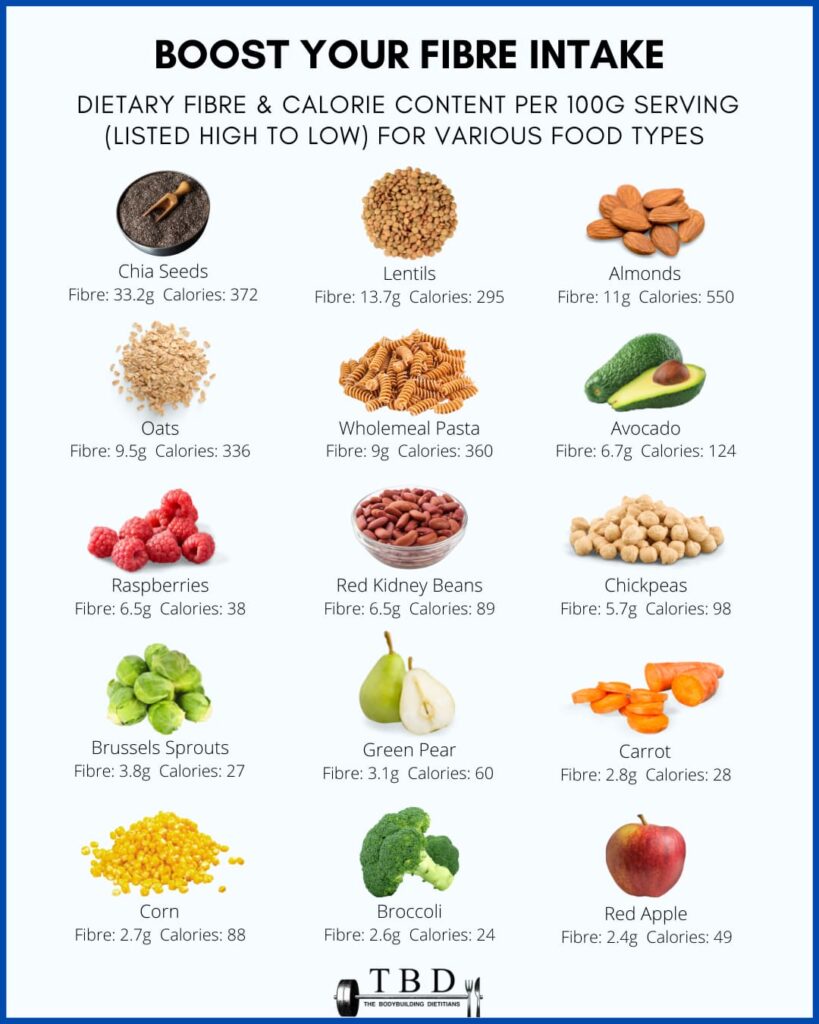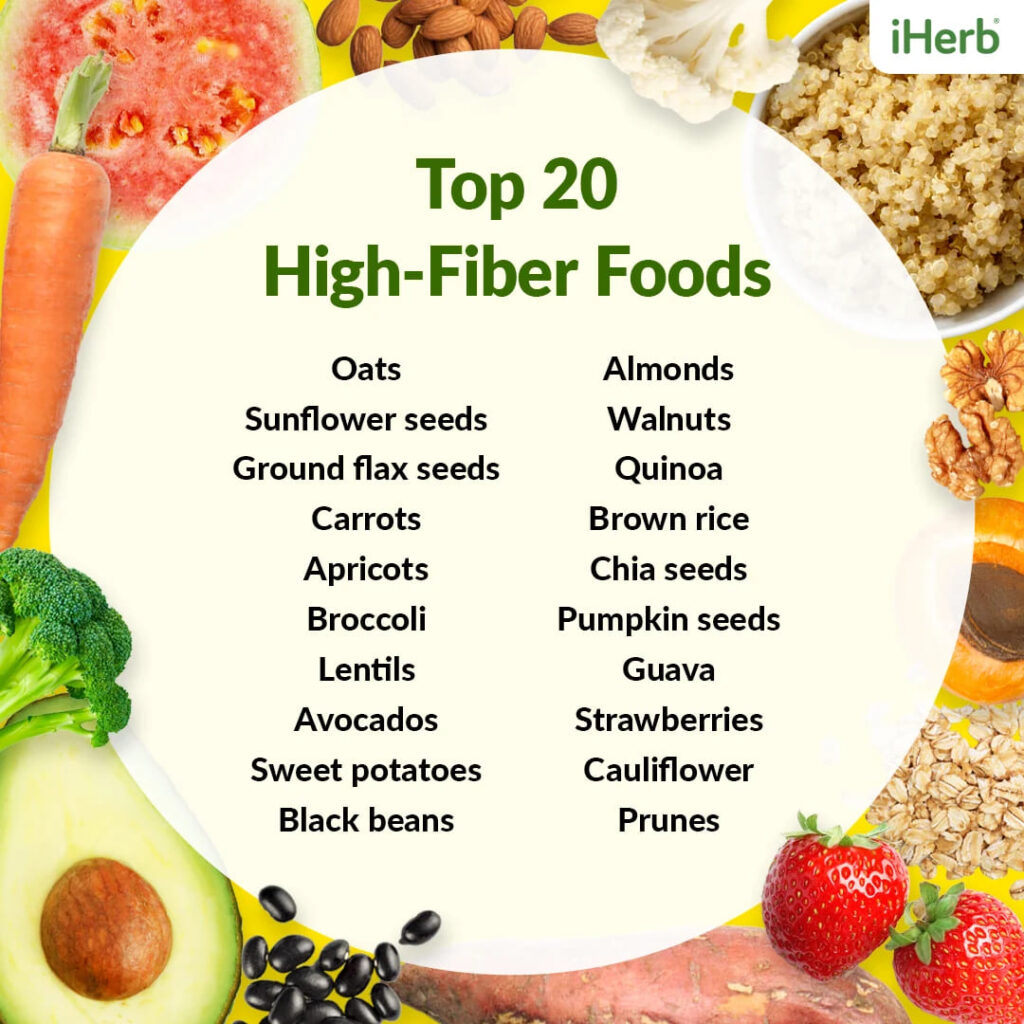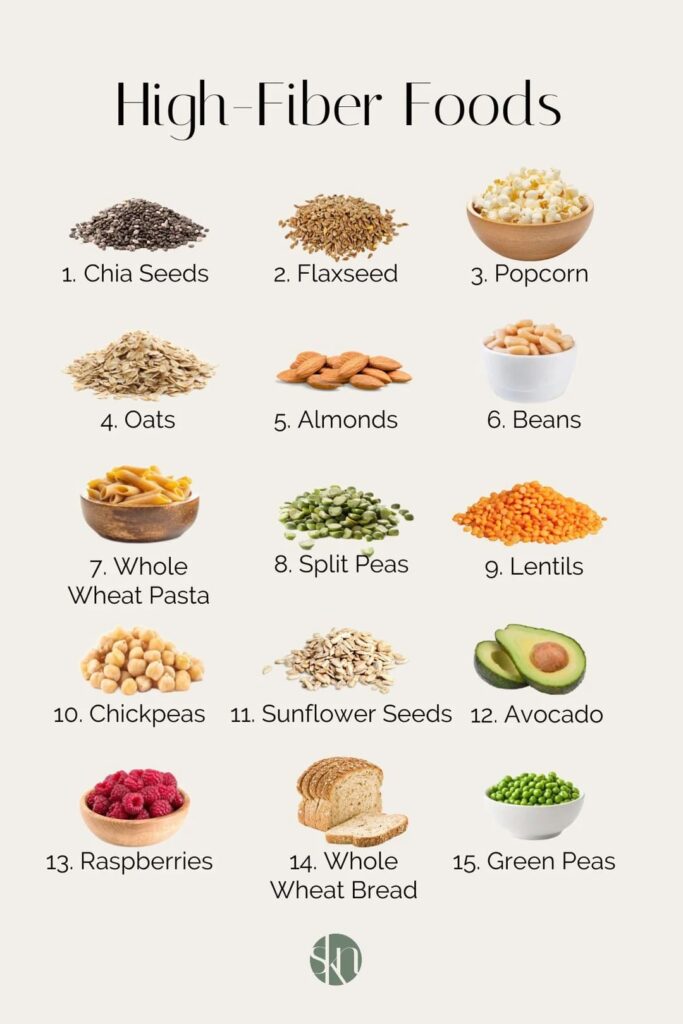
Introduction
Dietary fiber, often overshadowed by macronutrients like proteins and fats, plays a pivotal role in maintaining optimal health. Despite its importance, many individuals fall short of the recommended daily intake. This article delves into the multifaceted benefits of dietary fiber, identifies its primary sources, and offers practical strategies to enhance fiber consumption.

The Multifaceted Benefits of Dietary Fiber
1. Digestive Health and Bowel Regularity
Dietary fiber is renowned for its ability to promote regular bowel movements. Insoluble fiber adds bulk to stool, facilitating its passage through the digestive tract. Conversely, soluble fiber absorbs water, forming a gel-like substance that softens stool and eases its elimination. A study from the University of Minnesota highlighted that each plant source of insoluble fiber contains unique bioactive compounds, which have been linked to a lower incidence of cardiovascular disease, cancer, and type 2 diabetes. (ScienceDaily)

2. Cardiovascular Health
Consuming an adequate amount of dietary fiber has been associated with reduced levels of LDL cholesterol, commonly referred to as “bad” cholesterol. Soluble fiber, in particular, binds to cholesterol particles and aids in their removal from the body. This mechanism contributes to a lower risk of heart disease.
3. Weight Management
High-fiber foods are typically low in calories and take longer to chew, promoting satiety and reducing overall calorie intake. Additionally, fiber-rich foods often have a low energy density, meaning they provide fewer calories than the same weight of other higher-calorie foods. This combination helps in weight management and may aid in weight loss.
4. Blood Sugar Control
Soluble fiber can slow the absorption of sugar, leading to improved blood sugar levels. This effect is particularly beneficial for individuals with type 2 diabetes, as it helps in maintaining stable blood glucose levels. A dose–response analysis of randomized controlled trials published in 2023 indicated that viscous soluble dietary fiber positively influences glucose and lipid metabolism in patients with type 2 diabetes. (Frontiers)
5. Gut Microbiota and Immune Function
The fermentation of dietary fiber by gut bacteria produces short-chain fatty acids, which serve as an energy source for colon cells and play a role in immune function. A study led by Professor Mahesh S. Desai revealed that dietary fiber produces a variety of health-boosting compounds beyond short-chain fatty acids, including secondary bile acids, amino acid derivatives, and vitamins. (Luxembourg Institute of Health)

Primary Sources of Dietary Fiber
Incorporating a variety of fiber-rich foods into your diet ensures a balance of soluble and insoluble fibers. Below is a table highlighting common sources:(Real Simple)
| Food Category | Examples | Fiber Content (per 100g) |
|---|---|---|
| Whole Grains | Oats, barley, quinoa | 10–15g |
| Fruits | Apples, pears, berries | 2–5g |
| Vegetables | Carrots, broccoli, spinach | 2–3g |
| Legumes | Lentils, chickpeas, beans | 6–8g |
| Nuts and Seeds | Almonds, chia seeds, flaxseeds | 5–10g |
The World Health Organization recommends that adults consume at least 400 grams of vegetables and fruits and 25 grams of naturally occurring dietary fiber per day. (Organisation mondiale de la santé)

Strategies to Boost Fiber Intake
- Start with Breakfast: Opt for whole-grain cereals or oatmeal topped with fruits like berries or bananas.
- Snack Wisely: Choose raw vegetables, fruits, or a handful of nuts as snacks.
- Incorporate Legumes: Add beans or lentils to soups, salads, and stews.
- Read Food Labels: Select products with higher fiber content per serving.(Medical Xpress)
- Gradual Increase: Increase fiber intake slowly to allow your digestive system to adjust.(Harvard Health)
- Stay Hydrated: Drink plenty of water to help fiber move through the digestive system.
Conclusion
Dietary fiber is a cornerstone of a healthy diet, offering benefits ranging from improved digestive health to reduced risks of chronic diseases. By understanding its importance and incorporating a variety of fiber-rich foods into daily meals, individuals can harness the full potential of this essential nutrient. Prioritizing fiber intake not only supports individual health but also contributes to the prevention of numerous health conditions.
Note: The information provided in this article is based on current research and guidelines. For personalized dietary advice, consult with a healthcare professional or registered dietitian.






